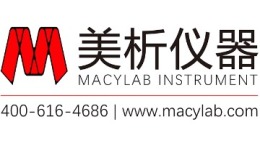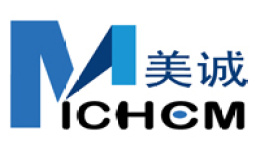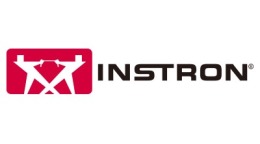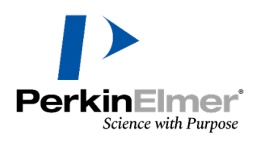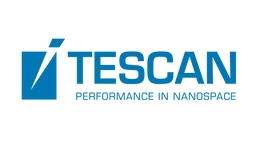方案详情文
智能文字提取功能测试中
LS Series应用文献 LS Series 应用文献 废料在陶瓷业中的再利用 编译者: 葡萄牙Aveiro大学 Campo Universitario de Santiago 3810-193 Aveiro -Centro-Portugal For further information contact: Rui Correia - email: rcorreia@cv.ua.pt-Tel +351-234-370237 论文1 J.M.F. Ferreira, P.M.C. Torres, M.S. Silva, J.A. LabrinchaCeramics and Glass Engineering Dept., CICECO,University of Aveiro, 3810-193 Aveiro, Portugal 摘要 本文为天然花岗岩切割过程中所产生的浆料可作为砖块及地面瓷砖配方中的原料应用的报告。对该种浆料的物理化学特性和矿物学特性的描述,可以弄清楚主要的技术局限和详细解释浆料的前处理的要求。首先,须要仔细地分选不同的原料,如大理石与花岗岩石。然后,将收集到的不同时期批次的原料处理、混合,与一般天然原料的做法一样。研究发现直接使用浆料有很大的缺点,浆料水分含量高(超过50-wt.%)和干燥后收缩值很高。因而生产者最好先作前处理烘干的步骤,可使这些问题出现率降至最小。一旦达到的这些要求,砖块类型(BT)或地面瓷砖类型(FTT)的配方中的该种原料的含量就可大大提高(达到50%以上),通过对比干燥与煅烧的功能特性将显示出这种可能性(例如,机械阻力、吸水性、收缩性)。 浆料的表征 ......平均粒径与粒径分布......由库尔特公司LS230来测量(英国库尔特仪器公司-注:即现在美国贝克曼库尔特公司的前身)。 论文2 M.J. Ribeiro1, J.M. Ferreira2,J.A. Labrincha2 1ESTG,Polythecnique Institute of Viana do Castelo, 4900 Viana do Castelo, Portugal2Ceramics and Glass Engineering Dept., CICECO, University of Aveiro, 3810-193 Aveiro, Portugal 1.介绍 在陶瓷行业,特别是建筑部门会对水泥业的工厂为结合物或不同种类废料的再利用制定有趣的可供选择的办法。事实上,目前的产品标准包含会大量消耗的金属资源(例如,制专业单位中每天消耗中等粒度的粘土500吨)、不同特性的天然原料、个别配方的使用。焙烧处理将得到废料应用在瓷砖终产品上不活跃的期望值,并非不重要。 本论文回顾在我们实验室中进行的建筑陶瓷业中具有行业导向性的废料利用的研究。很有必要对每一残渣进行仔细地表征以及对正确利用所需的前处理进行详细地鉴别,因为通常每种原料多会遇到这样的问题。而且要正确预测处理过程的条件下的效果,同时最后特性的改变也需要评估。 论文3 VALENCIA INSTITUTO DE TECNOLOGIA CERAMICA of UNIVERSIDAD JAUME I ofCASTELLON Ceramic Industry and Environment in Spain Dr. Antonio Barba,Dr. Carlos Feliu, Dr. Eliseo Monfort, Mr. Gustavo Mallol. 近年来主要集中在Castellon地区的西班牙陶瓷业有了可观的增长,产品以50%的速度增长(特别是从1995年的四亿平方米增长至2001年的六亿平方米)。这样的发展同时也带来了与之伴随的设备等的增长。这些众所周知的带来的环境问题,要立法加以解决。因而会令大公司关注环境以及实行预防环境污染和改善污染的措施。同时也关注废物的处理与再利用。 WASTE RECYCLING IN THE CERAMIC INDUSTRY This edition was compiled by: University of Aveiro Campo Universitario de Santiago 3810-193 Aveiro-Centro-Portugal For further information contact: Rui Correia - email: rcorreia@cv.ua.pt-Tel+351-234-370237 ARTICLES RECYCLING OF GRANITE SLUDGES IN BRICK-TYPE AND FLOOR TILE-TYPE CERAMIC FORMULATIONS J.M.F. Ferreira, P.M.C. Torres, M.S. Silva, J.A. Labrincha Ceramics and Glass Engineering Dept., CICECO, University of Aveiro, 3810-193 Aveiro, Portugal Abstract This work reports the use of sludge generated from natural granite cutting processes as raw material in brick-type and floor tile-type ceramic formulations. The physico-chemical and mineralogical characterization of thesludge was carried out in order to identify the major technological constraints and to define the sludge pre-treatment requirements. First, a careful separation of different materials should be implemented, e.g. for marbleor granite stones. Then, disposal and mixing steps of sets collected in different dates are needed, like normallypractised for natural raw materials. High moisture content (above 50-wt.%) of the as-processed sludge and theinduced high shrinkage values observed on drying constitute the most important drawbacks for their direct use.A previous drying step, preferably conducted by the producer, will minimise those problems. Once followingthose requirements, the incorporation of high levels (up to 50-wt%) of residue in brick-type (BT) or floor tile-type (FTT) formulations is possible, as shown from the comparative evaluation of the relevant functionalproperties of dried and fired bodies (e.g., mechanical resistance,water absorption, shrinkage). 1. Introduction In recent decades, the growing consumption and the consequent increasing of industrial production has led to afast decrease of the available natural resources (raw materials or energy sources). On the other hand, a highvolume of production rejects or sub-products is generated, most of them not directly recyclable. Traditionally,disposal as soil conditioner or land filling are the commonly used processes for their consumption. However, theseways are sometimes problematic, not only because land is limited, but also because there are strict regulations interms of location, categorised site, gas emission, leaching characteristics, etc. Therefore, alternative ways to reuseseveral types of waste materials have been attempted in recent years, including the incorporation in clay-basedceramic products [1-7]. Heavy clay ceramic materials (namely, bricks and roof tiles or floor tiles) are generally veryheterogeneous,since they consist of natural clays with a very wide-ranging overall composition [8]. For this reason,such materials can tolerate the presence of different types of wastes, even in considerable percentages [9]. The present work aims at studying the recycling ability of a non-toxic sludge generated from natural granitecutting processes. The high daily-producing amounts and the difficulties in reducing their volume, by suitablefilter-pressing methods, require high transportation costs for disposal. On the other hand, no interestingapplications were implemented up to now. Its use as raw material in brick-type and floor tile-type ceramicformulations is reported. Such practical approach is encouraged by the relatively fine(particle size distribution ofthis type of sludge, which will not require any further grinding step, and can potentially replace the low gradeclay components used in the fabrication of BT products or the feldspar in FTT compositions. 2. Experimental Procedure 2.1. Raw materials The raw materials used in the present work were a plastic red clay (PRC), and a low-grade clay (LGC) normallyused in brick-type compositions, supplied by Fabrica Campos, Lda, Portugal; a shale clay (SC) from Bacia doParana, Brasil, that exhibits excellent fired properties when sintered at about 1100℃ [10]; and granite sludgesupplied by Eurogranitos, Agueda, Portugal. The PRC is based on illite, kaolinite, montmorilonite and somequartz and feldspar, while the LPG clay is mainly based on quartz and illite, as detected by DRX (Rigaku DenkCo. USA). Their full characterisation involving thermal and XRD analysis, and evaluation of physical propertiesafter firing at a maximum temperature of 1000℃ in a complete cycle of 22 hours, was already reported [11].The Brazilian clay consists essentially of a mixture of quartz, mica (muscovite), kaolinite, illite andmontmorilonite. 2.2. Characterisation of the sludge The complete characterisation of the as-received sludge involved determinations of its thermal behaviour, averagecomposition, average particle sizeandparticle size distribution, and other relevant parameters in order to evaluatethe needs of any previous pre-treatment steps and its suitability to be directly incorporated into brick-type or floortile-type compositions. Table 1 gives the average chemical composition of the dried sludge, confirming its silicious character.Aluminium, calcium, sodium, potassium and iron are the secondary oxides, being the last one the mainresponsible for strong red couloring of the fired products. Oxide FeO: MnO NazO TiO, MgO KO AlO: CaO Sio, LOI (Wt.%) 12.4 0.13 3.6 0.22 0.90 4.1 12.4 6.6 61.2 0.68 As expected,XRD revealed that quartz and feldpar (albite and microcline) are the main crystalline phases, withsome ninor amounts of caulinite and illite. Its thermal inertness is easily proved by the low value of ignition lossup to 1000°C. Particle size distribution of the as-received sludge was measured using a Coulter LS230 particlesize analyser (Coulter, UK). Figuree11Sshowsthedifferentialparticleesizedistributionof the dried sludge.Theaverageparticle size, D50, is about 8 um, while Dio and D90are about 1um and 49 pm, respectively. There aretwo small coarser populations centred at about 63um and 134 um. The largest measured particle sizeisapproximatelyy213um..Thisparticlesizedistribution dataasshows that the fineness of thesludge is suitable for being directly incorporated intobrick-type formulations. Figure 1. IDifferentialparticle size distribution of the sludge. 2.3. Preparation and characterisation of samples The clay raw materials were mixed with the granite sludge in different proportions, as reported in Table 2. Thebatch formulations containing a total amount of 2 Kg solids were prepared by a traditional method involving themixture of the dry components followed by addition of controlled amounts of water, ≈ 20% (BT) and ~ 18%(FTT) (on a wet basis) and extrusion under vacuum. Several cylindrical rod shapes with 10 mm diameter andabout 120 mm long were extruded. The testing samples were carefully dried at room temperature for 24 h andthen at 40C for another 24 h period and then completely dried at 120℃ for further 12 h. Linear dryingshrinkage was determined from the dimensions of the samples before and after drying. Table 2. Tested compositions Components Brick-type compositions (wt%) 1 2 3 4 5 PRC 30 35 35 40 45 LGC 70 30 15 0 5 Granite sludge 0 35 50 60 50 Components Floor tile-type compositions (wt%) 6 4 7 8 9 PRC 30 40 50 0 0 SC 0 0 0 40 50 Granite sludge 70 60 50 60 50 For BT compositions, about 20 testing pieces were fired at 950℃ in an industrial furnace, following a typicallong cycle of about 9 h. The same amount of testing samples of the FTT compositions were fired at 1100℃ inan electrical laboratory furnace, using a heating rate of 5℃/min, with a holding time of 1 h at the maximumtemperature. 3. Results and discussion The characteristics of fired materials like linear shrinkage, water absorption, and flexural strength were measured ina normalised way. The average results are summarised in Table 3. TemperatureCompositions Fired properties Linear shrinkage (%) Water absorption (%) Flexural strength (MPa) 950℃(BT) 1 0.15 (6.33 Total) 13.02 13.4 2 0.18(6.73 Total) 12.97 12.3 3 0.16 (6.33 Total) 12.92 10.3 4 0.21 (8.02 Total) 13.00 11.8 5 0.29(8.29 Total) 13.01 11.7 1100°C(FTT) 6 0.17(13.6 Total) 6.04 39.8 4 0.19 (14.8 Total) 1.60 53.8 7 0.28(15.7 Total) 0.43 57.4 8 0.26 (14.8 Total) 0.10 68.2 9 0.30 (16.5 Total) 0.00 74.6 Comparing the BT formulations, it can be observed that increasing amounts of PRC tend to enhance the totalshrinkage, as expected, except for the compositions 2 and 3 in which 35% or 50% of LGC were replaced by granitesludges, while water absorption is almost unaffected by the compositional changes. Such evolution of shrinkagevalues can be understood, since the PRC is mostly constituted by very fine clay particles of illite, kaolinite andmontmorilonite. These fine clay minerals are very sensitive to drying and, after completely dried, they readilyabsorb water from the atmosphere. These characteristics made impossible to obtain undamaged testing samplesfrom this raw material alone due to the stresses induced during the drying period. This high sensitivity behaviour todrying or water uptake might be responsible for the decreasing trend of the flexural strength with increasingamounts of PRC. These results suggest that the proportions of PRC should be kept at levels in the range of 30-40wt.% or otherwise, the amount of water should be decreased, while the LGC could be partially or totally replaced bygranite sludges. This was the reason why a lower amount ofwater was used in the FTT compositions. Table 3shows that under these conditions the flexural strength increases with increasing amounts of either PRC of SC,while water absorption decreases. Water absorption values lower that 0.5% could be obtained for PRC/granitesludge = 50/50, while impervious materials can be produced using the same proportion of granite sludge butreplacing the PRC by the SC. The better results obtained with the SC are according to the excellent densificationproperties of this raw material, as reported before [10] 4. Conclusions The results presented and discussed along the present article show that granite sludges derived from the cuttingprocesses of this natural stone can be regarded as an interesting raw material for the fabrication of heavy clayceramic products, such as bricks and roof tiles when fired at the normal temperatures for this type of products.The proportion of the granite sludges in BT compositions can be as high as 60%. For FTT products fired at 1100℃, a level of sludge incorporation in the 50-60% range can be used when combined with the SC, or belimited to a maximum of 50% in the case of PRC. Since the heavy clay ceramic industries daily process severalhundred tons ofraw materials, these results show that this will be a good way to consume the whole amounts ofgranite sludges produced, avoiding expensive management of the residues with landfill, and preserving anequivalent amount of natural mineral resources. ( 5. References ) ( [1] J.H. Tay:“Bricks manufacture from sludge",J. En v ir. Eng., 113 (1987),278. ) ( [2] M. Churchill:“Aspects of sewage sludge util i zation and its impact on brickmaking”, Global Ceram. Rev., 1(1994),18. ) ( [3] J. A. Perez, R. Terradas, M. R. Manent, M. Seijas, and S. Martinez:“Inertization of industrial wastes in ceramicmaterials”, Industrial Ceramics, 1 6 (1996), 7. ) ( [4] S. Stefanov:“Use of industrial wastes in the brick and tile industry” Ziegelindustrie Int., 3 (1986), 1 3 7. ) ( [5] S. A. Komissarov, T . M . Korchuganova, and A. V. Bel y akov:“Construction mater i als using tanning industry wastes, Glass & Ceramics, 51 (1994),32. ) ( [6] D. A. Pereira, D. M. Couto, and J.A. Labrincha:“Incorporation o f a luminum-rich residues in r efractorybricks”, CFI - Ceramic Forum International, 7 7 (2000),2 1 . ) ( [7] L. Pavlova: Use of industrial waste in brick manufacture, Tile & Brick Int., 1 2 (1996), 224. ) ( [8] J. E. Alleman:“Beneficial use of sludge i n building components. 1. Concept review and technical back g round”,Interbrick,3 (1987), 14. ) ( [9] M. D ondi, M . Marsigli, a nd B . Fabbri:“ R ecycling of industrial and u rban w astes in b rick production - areview” , Tile & Brick Int. , 13 (1997),218. ) ( [10] Ferreira, J .M. F.,“Improvement of slip Casting Performance of an Illite- and Montmorilonite-Based ClayMineral for Stone Ware Production”in Proceedings of the 1 Latin-American Cl a y Conference, Vol. 2, Ed.C.S.F. Gomes, Funchal-Madeira, September 17-22, 2000, pp.231-236. ) ( [11] D. M.S . Couto, R. F. Silva, F. Castro, andJ. A. Labr i ncha: “Attempts of incorporation of metal plati n gsludges in ceramic products”, Industrial Ceramics, 21 (2001), 1 63. ) INCORPORATIONOF CLAY-BASED CERAMICFORMULATIONSCONTAINING DIFFERENT SOLID WASTES M.J. Ribeiro, J.M. Ferreira , J.A. Labrincha ESTG, Polythecnique Institute of Viana do Castelo, 4900 Viana do Castelo, Portugal Ceramics and Glass Engineering Dept., CICECO, University of Aveiro, 3810-193 Aveiro, Portugal 1. Introduction The ceramic industry, particularly the structural sector, might constitute an interesting alternative to cement-makingplants for incorporation or reuse of different waste materials. In fact, actual production levels involve theconsumption of huge amounts of mineral resources (e.g., 500 ton./day of clays in a medium-sizedd brickmakingunit), and the heterogeneous character of natural raw materials, the use of several formulations and, not lessimportant, the firing process might ensure the desired inertness of final waste-containing products with respect tothe ceramic matrix. This paper reviews some industrially-oriented studies conducted in our lab on the incorporation of wastes instructural ceramics. A careful characterisation of each residue and a detailed identification of possible pre-treatment needs for their correct use is always necessary, as usually happens for each raw material. Moreover,correct prediction of their effects on processing conditions and/or on changes of typical final characteristics arealso evaluated. 2. Results Generally, samples are prepared according to the scheme shown in Figure 1, as close as possible to realexperimental conditions. The origin of the wastes might be divided in two categories: (i) arising from the own ceramic sector (fired glazed crock, sludges, etc); (ii) generated by different sectors (e.g., sludges from plating orsurface treatments (Al-anodising), sludge from potable water filtration, foundry sand, glass containers, etc).Two representative cases are now discussed in more detail. Al-anodising sludge The Al-rich sludge comes from an aluminium anodising industry (Extrusal, S.A., Aveiro). Table 1 gives theaverage chemical composition of the dried sludge, confirming its aluminous character. After calcining above1100°℃ the aluminium content might reach levels higher than 30%, corresponding to alumina levels higherthan 90 wt.%. Calcium, sodium, iron and cromium are the main impurities, being the last one responsible forthe light pink couloring effect. The leaching behaviour of the dried sludge confirms its non-toxic character. XRD shows the amorphous natureof the dried sludge, with aluminium hydroxide and sulphide being the main constituents. The appearance ofcrystalline phases (mainly alumina) is only detected above 1100℃, after the occurrence of sulphatedecomposition at about 800°C, as confirmed by DTA/TGA. Any reusing alternative of the as-received sludgeas a raw material for traditional or new products is seriously affected by excessive moisture levels, that willcause high shrinkage upon drying and firing and require high energy consumption for its decomposition(strong endothermic reactions). This problem is strongly minimised by assuring a previous drying step,preferably in the producer’s. Vacuum and pressure drying methods should be explored by the anodisingindustries, whenever thermal processes are not currently used. Figure 1 - Scheme of relevant steps for sample preparation. Table 1 - Chemical composition (XRF) of the dried and calcined (at 1600°℃) sludge, with respect to the relevantelements. Element(Wt.%) Fe Cl Na P S Mg Sn Al Ca Si Cr(T) Dried 0.4 0.15 0.6 0.2 4.5 0.07 0.3 23.0 0.6 0.4 0.25 Calcined at1600°C 0.5 n.d. 0.9 n.d. n.d. 0.12 n.d. 30.5 1.1 0.7 0.18 Table 2 summarises the effects of sludge addition on tile and brick ceramic formulations. Generally, it can beobserved that small additions (up to 5 wt.%) of pre-treated sludge do not induce significant deleterious effectson physical and mechanical characteristics of ceramic samples. Some remaining problems that deserve acomplemetary study might be related with higher shrinkage values shown by residue-containing samples uponfiring, certainly related with the aforementioned late decomposition reactions of the sludge. Those reactionstend to open the microstructure, especially if the resulting main phase is not reactive (as happens with aluminaformation). Those problems are more evident in as-received sludge-containing samples. The incorporation ofAl-rich anodising sludge in common ceramic products seems to be functionally viable, and interesting forenvironmental and economical viewpoints. The addition of small amounts (2-3 wt.%) of dried and milled sludgeonly causes slight changes in the normal processing conditions and in the final properties of the material.The formation of mullite-based refractory ceramics incorporating Al-rich anodising sludge up to levels of 70-wt% might be an alternative and more valuable way to reuse this residue. Table 2-Effect of sludge addition (wt.%) on typical ceramic formulations used for the production ofbricks and tiles. As-received and wet or previously dried and milled sludge was used. Shrinkage Shrinkage Apparent Water Flexural Composition on Drying on Firing Porosity Absorption Strength (%) (%) (%) (%) (Kgf/cm²) Pure Ceramic 7.6 8.1 27.9 15.8 280 +5% Wet Sludge 10.5 12.9 35.2 20.9 228 +15% Wet Sludge 15.0 20.0 41.5 26.9 174 +2% Dried Sludge 7.5 8.3 28.1 16.0 274 +5%Dried Sludge 7.5 9.8 31.3 18.2 245 Ceramic sludge The current waste is a non-toxic sludge collected in the wastewater treatment plant of a sanitaryware industry. Itis generated in several routine processing operations: (i) washing of the mills; (ii) collected rejects from the glazeapplying cabins or in-line application tests, etc. Its average chemical composition is given in Table 3. Table 3 - Chemical composition (XRF) of the dried sludge, with respect to the relevant elements. Element Si Zr Ca Al Ba K Zn S Fe Na Sr(wt%) 29.5 9.5 8,8 8,1 7,1 6,0 3,40,780.420,400.15 As happens with other several sludges, grainssize eis very small and permits its direct incorporation in ceramicformulations. Table 4 shows results of several stoneware formulations. Table 4-Effect of sludge addition (wt.%) on typical stoneware formulations. As-received and wet orpreviously dried sludge was used. PROPERTY Pure 5 wt%Sludge 10 wt%Sludge 10 wt% Dried Sludge Shrinkage on Drying (%) 2.32 2.06 2.30 2.10 Shrinkage on Firing (%) 9.15 9.61 9.69 10.36 Ignition Loss 6.29 6.66 6.97 6.92 Flexural Strength(Kgf/cm) 757 681 629 533 Water Absorption (%) 0.18 0.18 0.24 0.30 In general, the addition of sludge up to levels of 5 wt-% does not induce significant changes in the relevantfunctional characteristics and is enough to consume the total amount generated in each industry. However, onecan notice a tendency for a general degradation of properties (lower mechanical resistance) with sludgeadditions, due to its refractory nature. Despite careful sorting and mixing requirements, undesirable colouringeffects might be also promoted. Related references 1. M.J. Ribeiro, D.U. Tulyaganov, J.M. Ferreira, J.A. Labrincha,“Recycling of Al-rich industrial sludge inrefractory ceramic pressed bodies”, Ceramics International, 28[3], 319-26,(2002). 2. E. Martelon, J. Jarrige,M.J. Ribeiro, J.M. Ferreira, J.A. Labrincha,“New clay-based ceramic formulationscontaining different solid wastes”, Industrial Ceramics, 20[2],71-76,(2000). 3. M. Albuquerque, J.M. Flores, J.A. Labrincha,“Reuse of sludge generated in the wastewater plant of glazeapplying processes by direct incorporation in engobe formulations”, Industrial Ceramics, (in press). 4. D.A. Pereira, D.M. Couto, J.A. Labrincha, “Incorporation of aluminum-rich residues in refractory bricks",CFI - Ceramic Forum International, 77 [7],E21-E25, (2000). 5. P. Nunes, M.J. Ribeiro, J.M.F. Ferreira, C.S. Boia, J.A. Labrincha,“Mullite-based materials obtained fromindustrial wastes and natural sub-products”, Proc. TMS Fall Meeting on Recycling and Waste Treatment inMineral and Metal Processing: Technical and Economic Aspects”, Vol.2, p. 359-68, ed. B. Bjorkman, C,Samuelsson, J. Wikstrom, Lulea, Sweden, (2002). Contacts DEPARTAMENTO DE ENGENHARIA CERAMICA E DO VIDRO UNIVERSIDADE DE AVEIRO, 3810-193 AVEIRO (PORTUGAL) RECYCLING IN THE REGIONS VALENCIA INSTITUTO DE TECNOLOGIA CERAMICA of UNIVERSIDAD JAUME I of CASTELLONCeramic Industry and Environment in Spain Dr. Antonio Barba,Dr. Carlos Feliu,Dr. Eliseo Monfort, Mr. Gustavo Mallol. In recent years the Spanish ceramic tile sector, which is mainly concentrated in Castellon, has witnessedspectacular growth: production has risen by 50% (specifically from 400 million m²in 1995 to over 600 millionm’in 2001. This development has also brought with it new products, extensive equipment upgrading, etc.These facts, together with a heightened awareness of environmental issues and changes in legislation, have ledto greater company concern for the environment and progressive implementation of pollution preventive andcorrective systems, as well as waste management and waste recovery or reuse. ITC activities The numerous activities conducted at ITC relating to Eco-management include actions such as dissemination ofnew regulations, advice on enforceable environmental legislation, performance of environmental evaluations,and preparation of compulsory documents in this field. The ITC Environmental Unit also provides aconsultancy service on the implementation of Eco-management systems for companies from the ceramic sector.As an example, the following briefly notes some specific studies on ceramic waste recycling or reuse, whichhave recently been published or will soon appear in press. RECYCLING FIRED TILE SCRAP INRED-FIRING FLOOR AND WALL TILE COMPOSITIONS This paper deals with the technical and economic feasibility of recycling the fired tile scrap in red-firing ceramictile manufacturing processes by adding the scrap to the body composition. In the Spanish ceramic industry these wastes are at present mainly dumped at disposal sites. However the studyshows that under current conditions, recycling is a very interesting option. VALORISING GLAZE SLUDGES BY REUSE IN GLAZE PRODUCTION A study has been carried out in close co-operation with the firm TAU CERAMICA, S.A., on valorising glazesludge, on which a paper will soon be published. The study addresses the problem of reusing glaze wastes inglazed tile manufacture. For this, various valorisation approaches were analysed from a technical and economic standpoint. Owing to theorigin of these wastes, the first option was glaze and engobe production. However one of the major problemsencountered has been waste quality, as glaze residues are mixed with organic additives from the process, as wellas with colourants, which makes reuse difficult. The second difficulty has been the great quantity of glazeresidues that are produced in the glazed tile manufacturing process. To tackle the problem a waste separation system was installed“in situ” in the industrial process in order to haveglaze residues without colourants or organic additives, thus considerably raising the possibility of reuse. Thisapproach was found to enable producing glazes that could be used in manufacturing floor tile, with certainconstraints. From an economic standpoint, the most interesting option would appear to be using these wastes in themanufacture of dedicated models, i.e., models which have been specifically designed to enable incorporating ( Reciclado de tiesto en composiciones de p avimento y revestimiento rojo (I) E .Monfort;J. Garcia- T en; P. Velasco;M. Monzo; S. Mestre; J.C. Jarque. Tecnica Ceramica 292, 450-458, 2001. ) ( Reciclado de tiesto en composiciones de pavimento y revestimiento rojo (II)E. Monfort, J. Garcia-Ten; P.Velasco, M.Monzo; S. Mestre; J.C. Jarque. Tecnica Ceramica, 293, 629-633,2001. ) ( Recycling fired redware tile scrap in red-firing fl o or and wall tile compositions. E. Mo nfort; J. Garcia-Ten;P. Velasco; M .M o nzo; S. Mestre;J.C. Jarque. Tile & Brick In t ernational 166, 420-27,2000. ) these wastes. For the recovery of all the waste to be feasible, glaze losses in application and preparation need tobe reduced to about 30% of current losses. REUSE OF MARBLE WORKING WASTES IN THE MANUFACTURE OF CERAMIC TILES, FRITSAND FIRED CLAY PRODUCTS (ROOFING TILES AND BRICKS) ITC is currently also participating in a project entitled“Reuse of marble working wastes in the manufacture ofceramic tiles, frits and fired clay products (roofing tiles and bricks)". The results obtained on a laboratory scale demonstrate the feasibility of using these wastes in the manufacture ofwhite-firing ceramic wall tiles, certain types of frits, and white-firing bricks and roofing tiles. A study is presently being conducted on the technical and economic feasibility of the project on an industrialscale. Contacts ASOCIACION DE INVESTIGACIONDE LAS INDUSTRIAS CERAMICASCASTELLON (SPAIN) LIMOUSIN The glass and ceramic industry produce each year in France several hundred thousands tons of inert wastesfrom minerals. A few examples: A porcelain manufacture producing 1 000 tons of porcelain a year will also involve the production of 40 tons ofporcelain wastes (in mean value 2 % to 6% of the production are pieces with defects after firing), 20 tons ofrefractory material wastes used in kiln equipment and 15 tons of used plaster moulds for the shaped pieces. The companies management of these wastes yet considered as the more inert constitutes a minimal cost of I5Euros (before taxes) per ton of waste produced. Because of the economical necessity, the industrialists are more and more interested from the recyclingpossibilities. But a lot ofproblems still exists : either the recycled waste does not allow to find the initial rawmaterial needed quality again, or the company cannot invest in the necessary recycling equipment. Valorization solutions are greatly expected. Actually since July 1, 2002 will be only controlled dumpingallowed in the final wastes, which cannot be recycled or valorized. We can then imagine the cost evolution forthis type of management for the companies making such waste. With our valorization project of mineral waste coming from the ceramic industry, we propose an alternativesolution for these companies. We are ableto increase the value of porcelain, tiles and sanitary rejects, with theuse of an adapted physicochemical process. We want also extend this type of treatment to other mineral waste. Management of Ceramic Recycling in Wallonia During the last number of years, environmental regulations in Wallonia have greatly changed, in response todirectives on the matter from Europe. The social, legal and financial pressures resulting from these regulations obviously affect the ceramic sector,which, although not a“very polluting”sector, is nonetheless confronted with environmental problems.From a management point of view, a large number of companies have ISO9000 certification, however, some(currently 2 companies) are in the process of finishing the adoption of an environmental management system ISO14001. Although this seems a small number it is significant in a country that still only has a limited numberofISO14001certifications. Another very significant aspect is management of industrial waste, taking into account the Walloon waste plan"HORIZON 2010", which will severely limit the types of waste acceptable in landfill. The ceramic sector inWallonia has positioned itself along 2 strategic axes: Seeking routes to add value to waste products thereby avoiding landfill dumping. For example: Pilot tests have been carried out to re-use ceramic waste as a dry powder filler in thermosetting plastics andresins. Fired ceramic scrap is reincorporated in mixtures for the manufacture of bottom-of-the-range refractories. The majority of companies treat their liquid effluents and the recovered enamel and slurry waste is recoveredwith the filter cake mud in most cases. Adding value to these muds remains an unsolved problem andcompanies are actively seeking solutions. To use waste coming from other industrial sectors as alternative raw materials, thereby reducing costs andincreasing profitability. It is mainly the brick and refractory (bottom-of-the-range concrete products) sectors that are active in this field.Currently, the most commonly used waste products are schist fines, porphyry, sawdust, mud from paper millsand sawmills and foundry sands. Research work is underway to exploit dredging mud, mud from purificationstations, waste refractory, etc. In general, the actions listed above are undertaken on a company by company basis without dialogue within thesector. However, because the refractory materials sector has a very strong presence in Wallonia, in terms ofmanufacturers and users, it is restructuring itself in order that concerted and coherent actions can take place. A "refractory group" has been initiated, bringing together industrialists from all stages of the life cycle ofrefractory products, producers, fitters, users, dismantlers and recyclers, in order to structure these actions.This structure will act in a number of ways: Creation of a unit providing assistance and advice on recycling of refractory products. Commencement of a research programme concerning recycling of heavily polluted refractory products.Creation of a processing centre for this "difficult" waste. Setting up a databank specific to the sector. Recycling of Refractories For further information contact: C.R.I.B.C. RECYWALL Avenue Gouverneur Cornez, 4 Avenue Gouverneur Cornez,4 LS-APP-废料在陶瓷业中的再利用(摘要).doc LS-APP-废料在陶瓷业中的再利用(摘要).doc
关闭-
1/12

-
2/12

还剩10页未读,是否继续阅读?
继续免费阅读全文产品配置单
贝克曼库尔特国际贸易(上海)有限公司为您提供《花岗岩浆料等废料中粒径与粒径分布等检测方案(激光粒度仪)》,该方案主要用于建筑陶瓷中粒径与粒径分布等检测,参考标准《暂无》,《花岗岩浆料等废料中粒径与粒径分布等检测方案(激光粒度仪)》用到的仪器有null。
我要纠错
相关方案
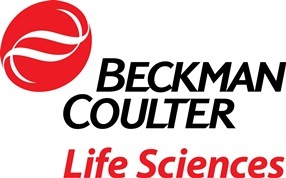

 咨询
咨询

